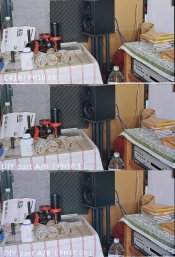Have you ever created a replacement for Kodak C41b C from CD-4 and Sodium Metabisulfite and checked, whether it behaves the same way?1. Kodak C41b C,as the title.
There is no standard for calling C-41 CD parts, therefore whatever Kodak calls part C may be Tetenal's part 1 or 2. Check the MSDS, while it doesn't have to give exact composition, it should be easy to differentiate between the three parts. Typically one part contains CD-4 + metabisulfite/Sulfur Dioxide, another part containst HAS or derivatives thereof, and the third part contains the rest (alkali, restrainers, sequestering agents)2. Tetenal C41 Developer Part 3 , its color will darken (yellowing) over time. I think it must have anti-fogging effect. But traditional formula C41 doesn't have this. (Part 3 contains - K2CO3, DTPA - Na5)
Tetenal's BLIX contains Ammonium Ferric EDTA, Ammonium Thiosulfate, a bleach accelerator and acetic acid to get the pH down to 6.5. Since Ammonium Thiosulfate is a speedy fixer, there's a good chance that it removes silver halide before developer can act.3. Tetenl Blix has excellent "stop function" even exceeding C41B bleach, but its PH value is 6.8. What's in it?
I would, however, question the term "excellent stop function" applied to Tetenal's BLIX, it has been reported many times over, that especially medium format C-41 film gets yellow splotches if one goes directly from C-41 CD to used BLIX. These yellow blotches do not appear if a stop&rinse is applied between CD and BLIX.









 !
!

